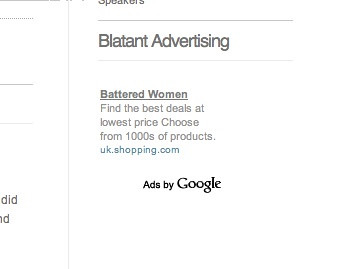Lately there has been a lot of chatter about APML. As a member of the workgroup advocating this standard, I thought I might help answer some of the questions on people’s minds. Primarily – “what is an APML file”, and “why do I want one”. I suggest you read the excellent article by Marjolein Hoekstra on attention profiling that she recently wrote, if you haven’t already done so, as an introduction to attention profiling. This article will focus on explaining what the technical side of an APML file is and what can be done with it. Hopefully by understanding what APML actually is, you’ll understand how it can benefit you as a user.
APML – the specification
APML stands for Attention Profile Markup Language. It’s an attention economy concept, based on the XML technical standard. I am going to assume you don’t know what attention means, nor what XML is, so here is a quick explanation to get you on board.
Attention
There is this concept floating around on the web about the attention economy. It means as a consumer, you consume web services – e-mail, rss readers, social networking sites – and you generate value through your attention. For example, if I am on a Myspace band page for Sneaky Sound System, I am giving attention to that band. Newscorp (the company that owns MySpace) is capturing that implicit data about me (ie, it knows I like Electro/Pop/House music). By giving my attention, Newscorp has collected information about me. Implicit data are things you give away about yourself without saying it, like how people can determine what type of person you are purely off the clothes you wear. It’s like explicit data – information you give up about yourself (like your gender when you signed up to MySpace).

I know what you did last Summer
XML
XML is one of the core standards on the web. The web pages you access, are probably using a form of XML to provide the content to you (xHTML). If you use an RSS reader, it pulls a version of XML to deliver that content to you. I am not going to get into a discussion about XML because there are plenty of other places that can do that. However I just want to make sure you understand, that XML is a very flexible way of structuring data. Think of it like a street directory. It’s useless if you have a map with no street names if you are trying to find a house. But by having a map with the street names, it suddenly becomes a lot more useful because you can make sense of the houses (the content). It’s a way of describing a piece of content.
APML – the specification
So all APML is, is a way of converting your attention into a structured format. The way APML does this, is that it stores your implicit and explicit data – and scores it. Lost? Keep reading.
Continuing with my example about Sneaky Sound System. If MySpace supported APML, they would identify that I like pop music. But just because someone gives attention to something, that doesn’t mean they really like it; the thing about implicit data is that companies are guessing because you haven’t actually said it. So MySpace might say I like pop music but with a score of 0.2 or 20% positive – meaning they’re not too confident. Now lets say directly after that, I go onto the Britney Spears music space. Okay, there’s no doubting now: I definitely do like pop music. So my score against “pop” is now 0.5 (50%). And if I visited the Christina Aguilera page: forget about it – my APML rank just blew to 1.0! (Note that the scoring system is a percentage, with a range from -1.0 to +1.0 or -100% to +100%).
APML ranks things, but the concepts are not just things: it will also rank authors. In the case of Marjolein Hoekstra, who wrote that post I mention in my intro, because I read other things from her it means I have a high regard for her writing. Therefore, my APML file gives her a high score. On the other hand, I have an allergic reaction whenever I read something from Valleywag because they have cooties. So Marjolein’s rank would be 1.0 but Valleywag’s -1.0.
Aside from the ranking of concepts (which is the core of what APML is), there are other things in an APML file that might confuse you when reviewing the spec. “From” means ‘from the place you gave your attention’. So with the Sneaky Sound System concept, it would be ‘from: MySpace’. It’s simply describing the name of the application that added the implicit node. Another thing you may notice in an APML file is that you can create “profiles”. For example, the concepts about me in my “work” profile is not something I want to mix with my “personal” profile. This allows you to segment the ranked concepts in your APML into different groups, allowing applications access to only a particilar profile.
Another thing to take note of is ‘implicit’ and ‘explicit’ which I touched on above – implicit being things you give attention to (ie, the clothes you wear – people guess because of what you wear, you are a certain personality type); explicit being things you gave away (the words you said – when you say “I’m a moron” it’s quite obvious, you are). APML categorises concepts based on whether you explicitly said it, or it was implicitly determined by an application.
Okay, big whoop – why can an APML do for me?
In my eyes, there are five main benefits of APML: filtering, accountability, privacy, shared data, and you being boss.
1) Filtering
If a company supports APML, they are using a smart standard that other companies use to profile you. By ranking concepts and authors for example, they can use your APML file in the future to filter things that might interest you. As I have such a high ranking for Marjolein, when Bloglines implements APML, they will be able to use this information to start prioritising content in my RSS reader. Meaning, of the 1000 items in my bloglines reader, all the blog postings from her will have more emphasis for me to read whilst all the ones about Valleywag will sit at the bottom (with last nights trash).
2) Accountability
If a company is collecting implicit data about me and trying to profile me, I would like to see that infomation thank you very much. It’s a bit like me wearing a pink shirt at a party. You meet me at a party, and think “Pink – the dude must be gay”. Now I am actually as straight as a doornail, and wearing that pink shirt is me trying to be trendy. However what you have done is that by observation, you have profiled me. Now imagine if that was a web application, where this happens all the time. By letting them access your data – your APML file – you can change that. I’ve actually done this with Particls before, which supports APML. It had ranked a concept as high based on things I had read, which was wrong. So what I did, was changed the score to -1.0 for one of them, because that way, Particls would never show me content on things it thought I would like.
3) Privacy
I joined the APML workgroup for this reason: it was to me a smart away to deal with the growing privacy issue on the web. It fits my requirements about being privacy compliant:
- who can see information about you
- when can people see information about you:
- what information they can see about you
The way APML does that is by allowing me to create ‘profiles’ within my APML file; allowing me to export my APML file from a company; and by allowing me to access my APML file so I can see what profile I have.

Here is my APML, now let me in. Biatch.
4) Shared data
An APML file can, with your permission, share information between your web-services. My concepts ranking books on Amazon.com, can sit alongside my RSS feed rankings. What’s powerful about that, is the unintended consequences of sharing that data. For example, if Amazon ranked what my favourite genres were about books – this could be useful information to help me filter my RSS feeds about blog topics. The data generated in Amazon’s ecosystem, can benefit me and enjoy a product in another ecosystem, in a mutually beneficial way.
5) You’re the boss!
By being able to generate APML for the things you give attention to, you are recognising the value your attention has – something companies already place a lot of value on. Your browsing habits can reveal useful information about your personality, and the ability to control your profile is a very powerful concept. It’s like controlling the image people have of you: you don’t want the wrong things being said about you. 🙂
Want to know more?
Check the APML FAQ. Othersise, post a comment if you still have no idea what APML is. Myself or one of the other APML workgroup members would be more than happy to answer your queries.






